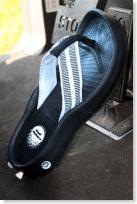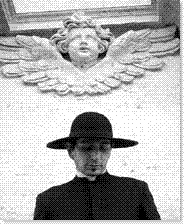When I was growing up, I can't say that Central Massachusetts was exactly rural, but there was a great deal more countryside around that was not yet filled up with suburban developments and shopping malls. And one of the things my city boy (Worcester) father and CITY GIRL (CHICAGO) mother liked to do on a summer's evening or a Sunday afternoon was load the kid in the car and "take a spin" out to the country.
In the city, we got to smell things like newly tarred roads, creosote on telephone polls, garbage trucks, diesel bus fumes, and nature's own cut grass, lilacs, and peonies.
In the country, you still got the newly tarred roads, but you also got dairy farm, chicken farm, and pig farm.
We never thought to roll up the windows when we passed by. Country smell was one of the reasons we took a spin out that way. If nothing else, it was one more reason we were happy to be city people.
But, of course, this was way before the advent of the factory farm (at least in Worcester County). Dairy farms, chicken farms, and pig farms were small.
In any case, I was interested in an article in last week's Boston Globe on a controversy taking place in Tewksbury, a town about 30 miles north of here, where "a fight over a pig farm's stench has the community in an uproar, frustrating public officials and turning neighbors into bitter enemies."
My first thought as I began reading the article was, typical.
People move out to "the country", where they find houses that are cheaper than they would in either city or near burb - and one reason they're cheaper is that there are things like pig farms there.
And the article reinforced this perception:
Some complaints come from residents at a luxury subdivision next to the farm, even though the people who live there signed a legal document recognizing the farm's existence at the time of purchase and the pig farm was there long before the residents..
But then I checked out chief complainer David Powers' website, the pungently named Tewksburyodor.org, and it appears that there may be more to this than meets the nose.
A few years ago, Powers noticed that the smell from a nearby farm was getting a lot worse, and he smelled a rat. Errrrrr, a pig. Make that lots of pigs.
Powers started sleuthing around and realized that one of the largest pig farms in the town had expanded its operations. He can't figure out the exact number of pigs that are now down on the farm, because:
Local health officials refuse to give information about the number of pigs on Krochmal Farm, saying to release that information violates Homeland Security rules protecting the secrecy of the nation's food supply.
I, for one, am sleeping more safely knowing that the country is "protecting the secrecy of the nation's food supply," but the number of pigs on what has become something of a factory farm is estimated at 900 poor swine which:
live in a barn perched atop a 500,000 gallon manure pit, all of which sits a light breeze away from vast tracts of ranch houses and minimansions.
According to Powers' website:
The odor problems worsened, according to many neighbors, about three years ago after the construction of a large pig confinement and waste storage structure which the Mass. Dept. of Agricultural Resources admits is "not prevalent in Massachusetts where pig farms are generally smaller". This building has large fans which force the gases that emanate from the pigs' waste into the air of a suburban residential neighborhood. This waste is kept directly below the pigs in a large, storage tank that can hold almost a HALF MILLION GALLONS OF WASTE near wetlands and only a matter of feet from homes. The fans keep the pigs from being asphyxiated and poisoned by these gases, and the neighbors pay the price.
And one of the nubs of the matter is that Krochmal farm didn't get the required permits to build this structure.
So Powers et al are advocating for a new set of rules.
The new rules would require swine farmers to get a permit from a newly established authority. They would also be asked to file manure management, pest control, and environmental plans with the town. Problems, including vile odors, would be reviewed by the new permitting authority, which could revoke a pig farmer's permit....
The new rules would counter the current state law, which holds that:
...the smells emanating from farms "engaged in generally accepted farming procedures" are exempt from state nuisance laws. This includes smells from pig and cow farms. (Source: Boston Globe article cited above.)
In this corner: the farmers who are just trying to make a living - and big, factory-type barns (with the attendant manure reservoirs) are the means to making a better living. And on their side, the argument that they were here first.
In the other corner: suburbanites who thought they were getting some 'breathe deeply, we're in the country" sort of smell - but who are now getting the "quick, close the windows, this place stinks!" sort of smell. On their side, this little pig farm just got bigger - and the research that Powers has compiled on ways to run a less odiferous pig farm.
But what's my favorite aspect of this story - at least so far?
At the bottom of the Globe story, third on the list of Google ads - right behind how to reduce belly fat (you pig!), and how to get a farm grant (live high on the hog off the taxpayer", is an ad from GoVeg.com:
Keep Pork off Your Fork
Check out our list of the Top 10 reasons not to eat pigs.
Now, if I gave any more thought to pig farms, I would not doubt be going veg. But that would mean doing without occasionally bringing home the bacon and making myself a good old fashioned BLT.



